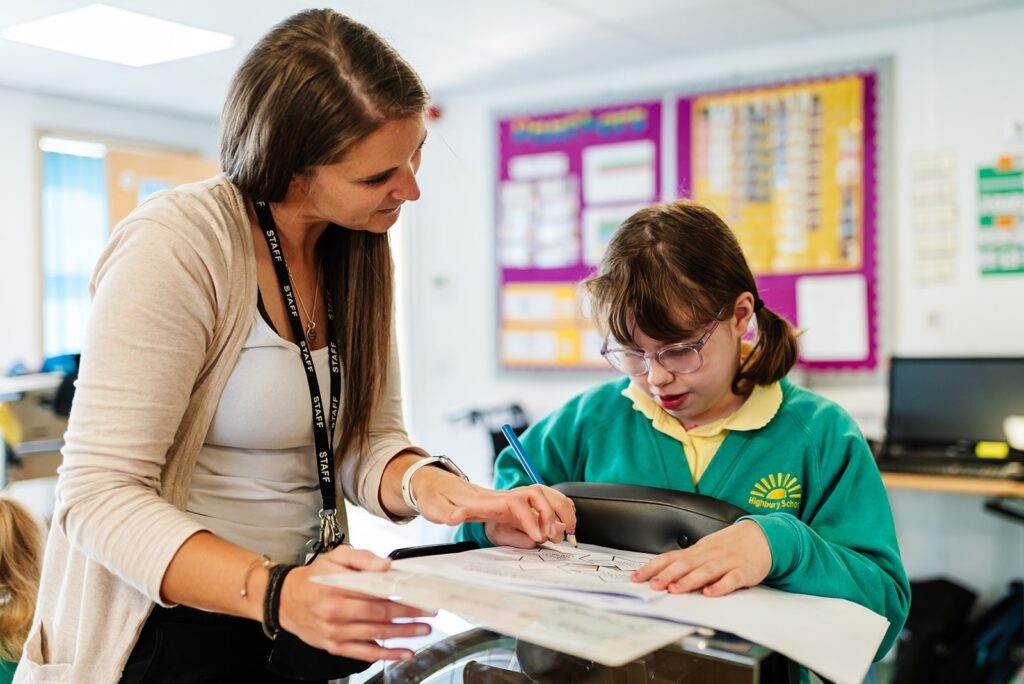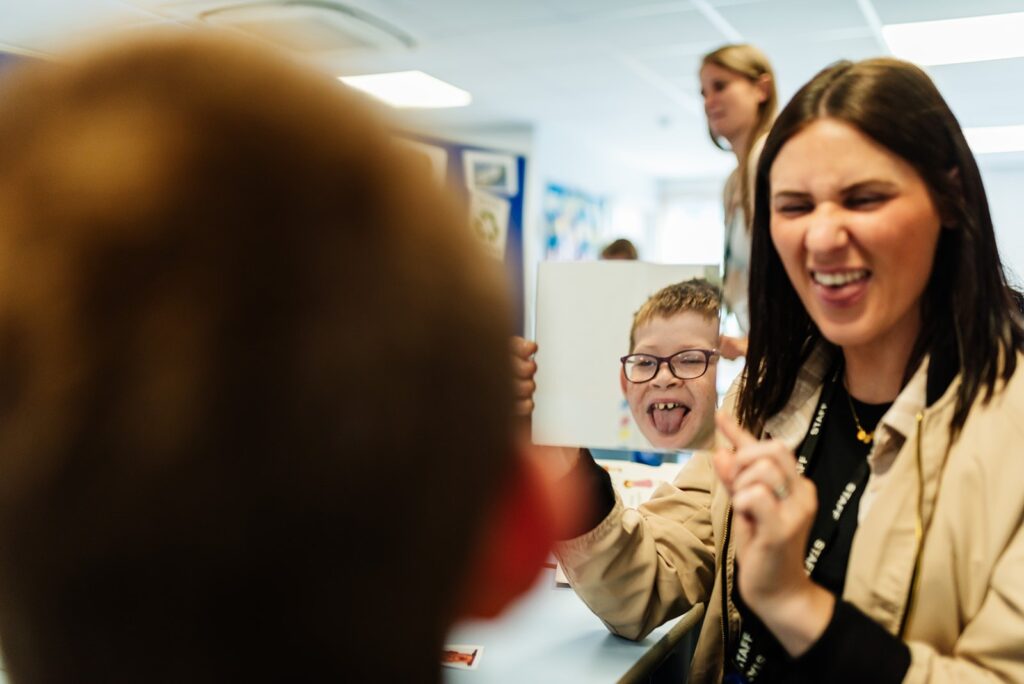Highbury Pathways
Our curriculum is as unique as the children it serves. We have written a bespoke curriculum where children follow a pathway which depends on their needs. This pathway is not fixed and is designed to be personalised to every child. We refer to these pathways as pre-formal, semi-formal and formal. These terms help teachers understand the approach and curriculum content they largely need to follow.
In order to guide teachers in the use of the curriculum and in order to maximize resources and teaching time, children in school are grouped primarily according to their needs. We do factor in their age and try to keep children of similar key stages together.
Whilst we cannot guarantee that all children in a class are working at the same level or have the same needs, we try to group children based on various factors such as:
- Their language and communication skills
- How well they can follow instructions and sit and attend to instructions and information (behaviour for learning)
- Their sensory needs and whether they need access to multi-sensory learning
- Their early reading, writing and maths skills
These class groupings change year on year because of the changing cohorts in school and the progress children make.
In order to inform the placement of new children, the following information/process is taken into account:
- EHC plan
- Current setting observations
- Transition meeting with all professionals
- Transition visits to the school
Once placed in a class children will largely follow the curriculum best suited to the majority of needs within that class.
A thematic approach
As each class works towards a specific model of curriculum delivery and content, it is important that there is still a sense of cohesion across the school. Themes are chosen which are designed to be engaging for the children and which lend themselves to a cross-curricular approach. Please see the theme map for further information.
The Pathways Curriculum
Curriculum Pathways is a bespoke curriculum designed by the staff at Highbury to reflect the needs of our pupils. The curriculum includes programs of study from the national curriculum alongside learning that is pertinent to the needs of the children.
The curriculum is separated into two strands. The first strand is designed for pupils who follow a pre-formal curriculum and are working towards the engagement scales. This curriculum focuses on the teaching of keys skills across a range of areas for children who are at the early stages of their learning.

The second strand is aimed at pupils who are able to follow a semi-formal/formal approach to their learning because they are engaged and have developed learning skills such as attention, looking, listening and following instructions. The children working towards this curriculum are following subject specific programs of study, the content of which is taken from the national curriculum, developmental milestones and Highbury specific content.
The Pathways Curriculum arose from a need to offer children access to a curriculum which is as diverse as they are. It is a curriculum which acknowledges the range of needs of our children and the impact that needs can have on learning.

At Highbury, we understand the importance of effective personalisation which creates opportunities for children to demonstrate learning within the framework of a curriculum which focuses on engagement whilst being rigorous about learning and which contributes to tracking progress.
Not all of our children can access a pure subject specific curriculum which is meaningful, functional and relevant to them.
The Pathways Curriculum has a strong emphasis on communication and language and the key functional skills that help children to navigate and understand the world around them and recognise the contribution that every child can make to their family, community and the wider world.

The Pathways curriculum ensures that all children have breadth and balance and that whenever possible and relevant they are working towards statutory programmes including The National Curriculum, Development Matters and The Early Learning Goals. The guidance upon which the curriculum is based is reviewed on an annual basis by subject managers.

The uniqueness of the curriculum is the addition of very specific skills and knowledge which we have identified as essential components of the curriculum for children at Highbury whilst embedding key teaching of British values, self-help and independence and safety. These areas need to be embedded throughout the curriculum, so they are indicated specifically within each aspect.

As this example demonstrates, the curriculum has been designed to illustrate the non-linear way in which many children will learn at Highbury. Each child’s pathway through the curriculum will be very personal to them. Further details of the complete curriculum are available on request from the school.




